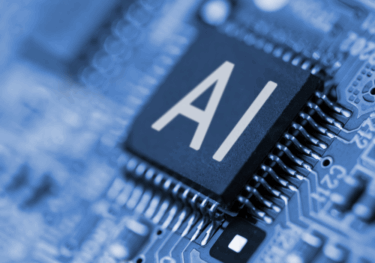Economist’s Notebook: China’s Economy in Transition – On-the-Ground Observations
The sleek service robot glides to a halt outside my hotel room in Tianjin, having navigated elevators and corridors with surprising dexterity. It delivers my bottled water before departing with a “thank you” note. This juxtaposition—cutting-edge automation in a city where young graduates are increasingly anxious about their employment prospects—encapsulates the contradictions in China’s economy today.
I recently travelled to Tianjin, a tier-2 city in northern China about 30 minutes by train from Beijing. This visit offered a valuable opportunity to take the pulse of the Chinese economy firsthand.
A tale of two economies: blind boxes and robots
During the trip, I had the opportunity to speak with some local university students who expressed concerns about their employment prospects. With the job-hunting season approaching, some of them are planning to pursue master’s degrees or study abroad—rather than brave what they perceive as a challenging employment market. Despite the official unemployment rate for 16-24 year-olds dropping to 15.8% in April, there’s a risk that it could rise again in the following months.
This economic uncertainty is also reshaping consumption patterns in visible ways. Budget retailers are flourishing, with affordable coffee and juice chains like Mixue (which listed earlier this year) drawing more foot traffic than premium brands like Starbucks. Perhaps most telling is the remarkable popularity of “blind boxes”—collectible toys typically priced around USD10. Locals describe these as an “affordable source of happiness”—a phrase that speaks volumes about consumer psychology in today’s Chinese economy. (Although, Labubu did recently take the headline for selling for more than $150,000 at China Auction, which is probably another topic for another day).
My visit coincided with the Dragon Boat Festival, bringing noticeably busy streets and hotels. Indeed, broader data points to a shift in Chinese household preferences away from goods and towards services such as tourism, as outlined in my recent Research Briefing. However, there might be another side to this, according to my local friends in Tianjin. Their take is that this represents a form of “consumption downgrade,” with people increasingly opting for domestic travel to tier-2 cities rather than more expensive destinations.
The inflation picture remains complex. While locals express concern about housing and education costs, there are clear price reductions in categories like electric vehicles. The proliferation of discount retailers is exerting downward pressure on everyday necessities. These trends are reflected in sluggish inflation data as we have highlighted for a while. Indeed, China posted another negative CPI inflation on June 9, marking the fourth consecutive month of y/y decline.
During my visit, I was impressed by young people’s strong interest in topics such as Japanization, investment in gold, financial market development in the US , revealing a sophisticated awareness of global economic concerns. As a self-sufficiency mindset develops amid rising geopolitical tensions, I was happily surprised by this question and humbly shared my belief around the importance of openness in today’s interconnected economy.
Unlock exclusive economic and business insights—sign up for our newsletter today
SubscribeBack at my hotel room, I called for room service and was surprised when my delivery arrived promptly—not by a person, but by a robot. The sleek mechanical attendant glided to a halt outside my door, having navigated elevators and corridors with remarkable precision. After delivering my bottled water, it departed with a digitally programmed conversation ended with a “thank you” note. This integration of robotics into everyday service reflects China’s broader push to promote high-tech adoption and innovation, following notable breakthroughs made by firms like DeepSeek and Unitree Robotics.

Universities and local governments are now beginning to make proposals for their 15th FYP (2026-2030), as part of the broader national 15th FYP which is likely to be unveiled early next year. From my limited sample size during the trip, there’s a clear emphasis on digital-related areas, reflecting national priorities around innovation, talent development and high-tech (and AI) deployment.
As I departed Tianjin, watching another service robot efficiently navigate the hotel lobby, I reflected on these contradictions. China’s economy continues to modernise at remarkable speed, yet it faces significant structural challenges. The robots may be delivering water today, but whether they can deliver sustainable, balanced growth remains the more pressing question.
Subscribe to our newsletters
Tags:
Related Reports

Understanding Australia’s Goods Trade Dynamics in 2025
2. Explore Australia's goods trade dynamics, with rising exports and falling imports. Learn how global demand impacts the trade balance and future projections.
Find Out More
Roadblocks to China’s chip self-sufficiency dream
China is unlikely to achieve full chip self-sufficiency any time soon because of high technological hurdles in producing advanced manufacturing equipment and materials. The self-sufficiency target now stretches well beyond actual fabrication to include the entire chip supply chain as China struggles to acquire necessary input and machinery into the production process.
Find Out More
Five lessons for businesses navigating tariffs and trade turmoil
In a rapidly evolving global trade environment, businesses must stay ahead of changing tariffs and regulatory demands. Our latest blog offers practical guidance on navigating tariffs, understanding key trade strategies, and leveraging accurate HS code classifications to optimize your supply chain. Explore essential insights that will help your business manage trade uncertainty, ensure compliance, and unlock new growth opportunities.
Find Out More
The Future of Trade: Tariffs, Taxes, and Economic Trends
Amid ongoing global trade uncertainty, business leaders are struggling to plan ahead as new tariffs continue to reshape the market. Even so-called “locked-in” tariffs are proving to be temporary, adding to the unpredictability. Firms are cautious, waiting for clarity before committing to major investments. As global trade volumes decline, the importance of understanding every relevant trade tariff and accurately applying the correct HS code to imported goods becomes even more critical for managing costs and compliance.
Find Out More
